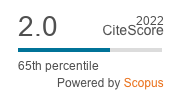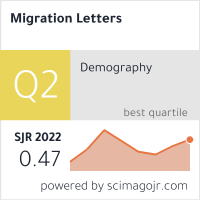The Impact of Migratory Flows on the Swiss Labour Market. A Comparison Between In- and Outflow
DOI:
https://doi.org/10.59670/ml.v13i3.293Keywords:
Immigrants, international migration, economic impact, labour marketAbstract
International labour migration in post-industrial countries raises numerous questions. A wide range of studies have been published on the impact of immigration on the labour market but only few studies take into account both arrivals (immigrations) and departures (emigrations), rather than only the role of newcomers on the labour market. This paper is based on a Swiss Longitudinal Demographic Database which links data from Population and Household Registers, administrative registers, and surveys. In particular, the Swiss Population Register provides the date of arrival or departure of immigrants/emigrants while the Structural Survey provides information on their characteristics and position on the labour market. Based on these data, this paper compares the socioeconomic characteristics of both immigrants and emigrants arrived in Switzerland during the period 2011-2013 or having left the country during the same period, a time span characterized by a yearly net migration of + 80,000 and a rapid economic growth. In terms of level of education, every category is characterized by a positive migration balance, which is not surprising: the economic growth observed in Switzerland during the period led to a demand on the labour market for both skilled and unskilled migrants. More precisely, migratory flows counterbalanced the erosion of the low and averagely skilled working-age non-migrating population and contributed to approximately one third of the increase in the number of highly skilled workers in the labour market. Concerning the occupations, the impact of the migration balance is highest among managers and sales workers. The paper also demonstrates that the migratory flows contribute to balance the decrease in the low and averagely skilled positions and to partially fulfil the economy’s demand for highly skilled workers.
Metrics
Downloads
Published
How to Cite
Issue
Section
License
CC Attribution-NonCommercial-NoDerivatives 4.0





